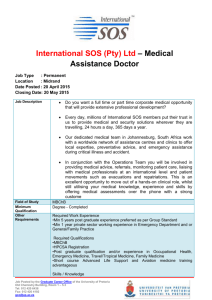Introduction
advertisement
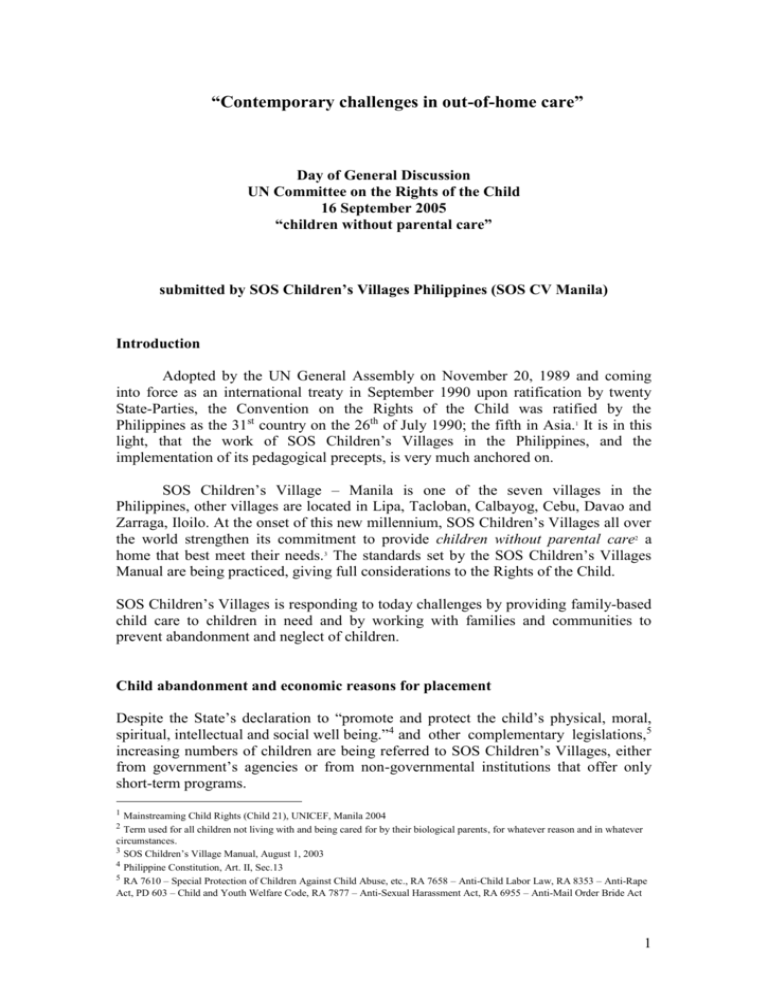
“Contemporary challenges in out-of-home care” Day of General Discussion UN Committee on the Rights of the Child 16 September 2005 “children without parental care” submitted by SOS Children’s Villages Philippines (SOS CV Manila) Introduction Adopted by the UN General Assembly on November 20, 1989 and coming into force as an international treaty in September 1990 upon ratification by twenty State-Parties, the Convention on the Rights of the Child was ratified by the Philippines as the 31st country on the 26th of July 1990; the fifth in Asia.1 It is in this light, that the work of SOS Children’s Villages in the Philippines, and the implementation of its pedagogical precepts, is very much anchored on. SOS Children’s Village – Manila is one of the seven villages in the Philippines, other villages are located in Lipa, Tacloban, Calbayog, Cebu, Davao and Zarraga, Iloilo. At the onset of this new millennium, SOS Children’s Villages all over the world strengthen its commitment to provide children without parental care2 a home that best meet their needs.3 The standards set by the SOS Children’s Villages Manual are being practiced, giving full considerations to the Rights of the Child. SOS Children’s Villages is responding to today challenges by providing family-based child care to children in need and by working with families and communities to prevent abandonment and neglect of children. Child abandonment and economic reasons for placement Despite the State’s declaration to “promote and protect the child’s physical, moral, spiritual, intellectual and social well being.”4 and other complementary legislations,5 increasing numbers of children are being referred to SOS Children’s Villages, either from government’s agencies or from non-governmental institutions that offer only short-term programs. 1 Mainstreaming Child Rights (Child 21), UNICEF, Manila 2004 Term used for all children not living with and being cared for by their biological parents, for whatever reason and in whatever circumstances. 3 SOS Children’s Village Manual, August 1, 2003 4 Philippine Constitution, Art. II, Sec.13 5 RA 7610 – Special Protection of Children Against Child Abuse, etc., RA 7658 – Anti-Child Labor Law, RA 8353 – Anti-Rape Act, PD 603 – Child and Youth Welfare Code, RA 7877 – Anti-Sexual Harassment Act, RA 6955 – Anti-Mail Order Bride Act 2 1 In SOS Children’s Village Manila, located in a highly urbanized area, only 35% of the children in care are orphans; about 45 % of children are abandoned and neglected by their parents, and 15% are born out of wedlock and their mothers are in their teen-age years or unmarried and with no means of survival6. From economic woes to outright collapse of families, there is a worrying trend that more and more children are left to government’s social services and to non-governmental child-care agencies. The high mark of child neglect and abandonment reflects the general economic atmosphere of the country where poverty rate is increasing. By sheer poverty and lack of permanent employment, more families fail to sustain their needs and the needs of their children. In fact, thirty-three percent (33%) of the fifteen million Filipino families are at risk or live below the poverty threshold.7 Single orphans and children of unmarried mothers face a similar dilemma; insufficient livelihood and care neglect of a working parent are frequent. Out-of-home care placement is often perceived by these families as a “solution” and way of “survival” for their children. There is a need for more social support services provided by the state and communities to families at risk so to prevent the abandonment of children. Child abuse Cases of emotional, physical and sexual abuse are a main underlying reason why children are being removed by the state or its duly accredited agencies, and the same are being referred to an SOS Children’s Village. Most of the child-abusers are person known or being trusted by the child – he can be a family member or a relative, neighbor, friend, babysitter, teacher, a child-care professional or any adult that has a moral ascendancy to the child. An abuser may also be a stranger to the child.8 Study shows that most child abusers have been victims of child abuse themselves. Other factors why parents or adults abuse children are predisposition toward maltreatment, emotional immaturity, economic and marital stresses, lack of constructive outlets for tensions, result of mental disturbance, incest, and most common, when adults or parents are under the influence of alcohol and prohibited drugs. Better analysis of causes is needed and related prevention measures and legislation to be developed. Temporary care and serial placements Most of the children experienced two or more temporary out-of-home care placements before they were admitted to SOS Children’s Villages. Agencies that provide temporary care usually advocate foster or adoptive family programs. Longterm placement is viewed a priori skeptical, in reality often due to lack of sufficient and sustainable funding for out-of-home care. A child is often moved from one 6 1988-2005, CV Statistics on Children & Youth, SOS Manila Pedagogical Team. NEDA Family Income and Expenditure Survey 2002 8 Special Protection of Filipino Children RA 7610 and 7658 7 2 temporary care placement to another. Only in cases, where no foster family is accepting the child, he/she is already staying longer in care or growing older, or no temporary care placement can be found; the child is referred to SOS Children’s Villages family-based care. This serial placement strategy has an enormous negative effect on the well-being of the child and triggers their deep distrust and disbelief in long-term relationships. They felt rejected and being used as charity objects. It takes an enormous process for the SOS family and siblings to restore their confidence in relations; create a sense of belonging and develop a lasting bond with these children. Children without parental care are being burdened with a lot of physical and emotional wounds. Since its healing is a long and enduring process, temporary out-ofhome care placement increases their vulnerability. A serious concern is also the risk of child rights violation due to lack of monitoring of such temporary placements. Lack of birth registration About 20 – 30% of the Filipino children are unregistered or have no birth registration. Poor parents gave birth mostly in their homes and fail to register their newborn child due to lack of money. Causes also include mere ignorance of the parents about the need of birth registration. For this reason, some children admitted into care possess simulated birth certificates or have on their certificates erroneous entries. These impacts negatively to their sense of identity, and is an obstacle to their later integration. During the admission process, a thorough review of pertinent papers relative to the person of the child is being done and partnership with the local Civil Registry Offices is being established. The need for standards in out-of-home child care In an SOS Children’s Village, each child is given an opportunity to actively participate in any actions and decisions relative to their persons, depending on their age or maturity, during their admission process up to the time they will be living autonomously or can be reunited with their biological families where possible. Children participate in every aspects of their family life, from simple household chores to issues concerning their education. During village developmental activities, children are deeply involved in the planning and implementation of different activities ranging from sports, culture and arts, spiritual, and to those that pertains to education. Biological or filial roots of the child are being traced by social workers and reestablished for those children who were abandoned or neglected, and those who are considered “findlings”9, so that regular contact between the child and his/her biological family be maintained, depending on the best interest of the child.10 Quality standards in out-of-home child care are assured through implementation and monitoring of SOS Children’s Village standards, based on the rights of the child as 9 Those children whose parents are unknown and no proper documentations have been presented and proved. A Foundling Certificate is usually being issued by the Local Civil Registry. 10 Article 9 par. 3 UNCRC 3 enshrined by the UNCRC. Standards assure that these rights are not only respected, but actually lived and experienced by them. Mothers and Village staff in SOS Children’s Villages undergoes regular seminars and trainings to ensure that they are competent and professionally responsive to the needs of the children and also to provide the necessary protection to the children. There is an apparent need for tackle the above mentioned issues in discussing and establishing international guidelines and standards for out-of-home child care to guarantee that all children in care are protected and supported as best as possible according the UNCRC. Project Director N. Leyson With Pedagogical Team of SOS CV Manila 4
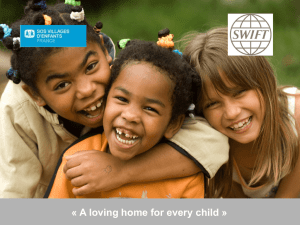


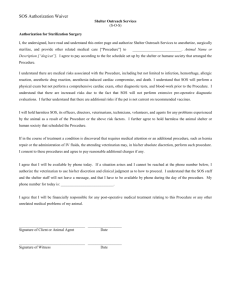

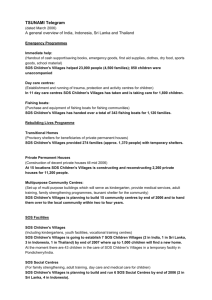

![Press Release as WORD document [KB 57,0]](http://s3.studylib.net/store/data/007669074_2-5442ba054a73c5414ab27cb6b4ac9c57-300x300.png)
